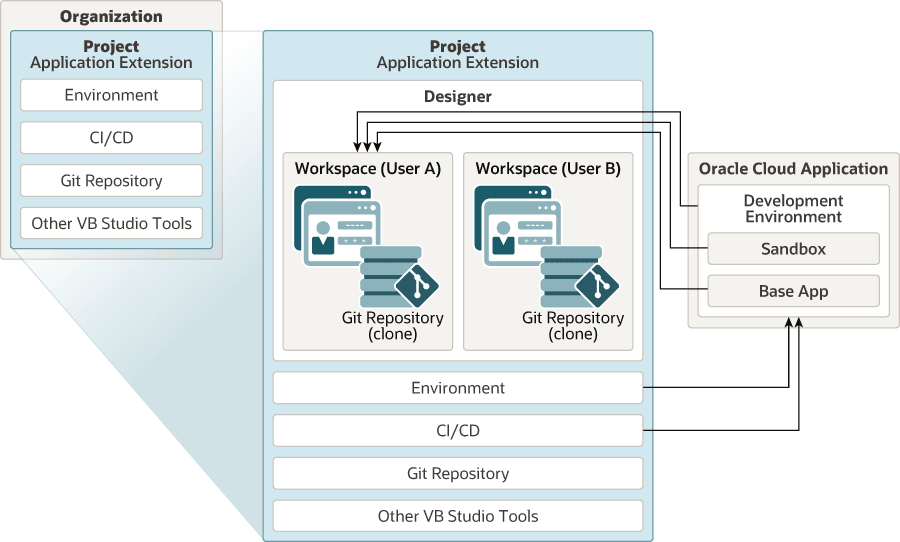What's an Extension?
The changes you make to your Oracle Cloud Application in VB Studio are stored in an artifact called an extension. Physically, the source files associated with the extension are stored in a Git repository.
Here are the key components of the VB Studio ecosystem as it pertains to extensions:
- Within a single Oracle Cloud Application environment family—which comprises all your development, test, and production instances—you have multiple instances of VB Studio, all of which are tied together into a single organization. Within your organization, you will likely belong to one or more projects, each of which is devoted to a discrete software effort. For example, you might have a project for building extensions for Oracle Cloud Applications, and another project for building a bespoke application your own department will use. A project brings together all the tools you need to create those artifacts, such as a Git repository for storing your source code, a pipeline to provide continuous integration and delivery, an issue tracking system, team wikis, and more.
- When it comes to extensions, it's easiest to use one project for all the extension work you do within an Oracle Cloud Applications environment family. Within that project, you can create a separate Git repository to store the source files for each pillar—one repo for HCM, another for CRM, and so on. If your team is too large to make that feasible, however, or if you simply want to isolate the extension work for each pillar, you can keep things completely separate by creating a unique project for each Oracle Cloud Application.
- When you work on an extension, you do so within the editors provided in the VB Studio Designer. Depending on which aspect of the page you're customizing, VB Studio invokes the proper editor to provide the experience you need.
- All of your work in VB Studio is done in the context of a workspace, a completely private area where you can work on your extension.
